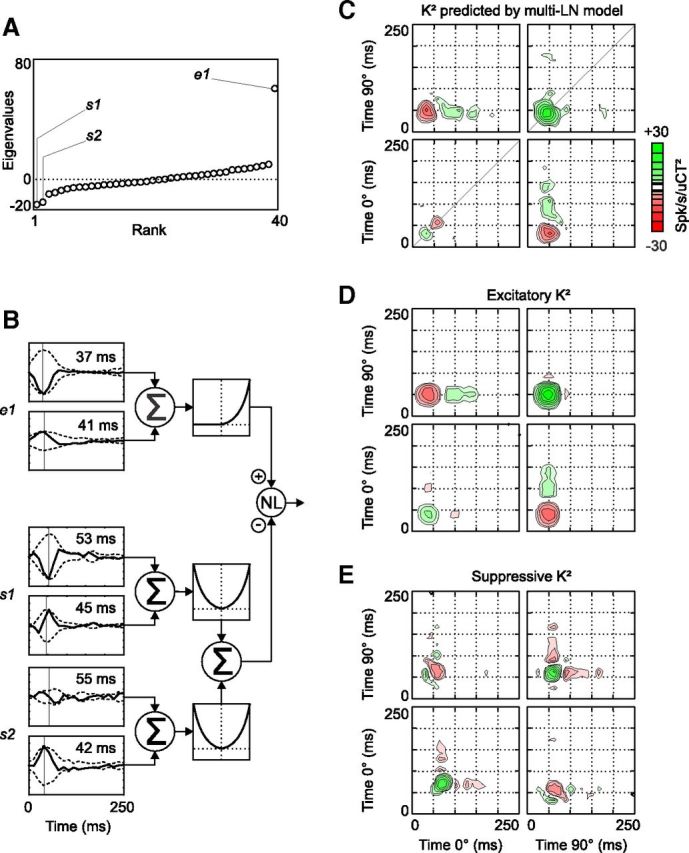Figure 3.

The multi-LN model and its predicted K2 at Hi CT (cell 1). A, Graph of the eigenvalues obtained after eigen decomposition of the K2 shown in Figure 1E. Three eigenvalues (two negative and one positive) differed significantly from the eigenvalues obtained after randomly time shifting the spike responses relative to the stimulus. B, Schematic illustration of the multi-LN model of cell 1. The linear filters s1, s2, and e1 each consist of two 1D filters. Their envelopes are shown (dotted lines) and the peak latency of each envelope is indicated in inset. The output of e1 is passed to a half-squaring function, whereas the outputs of s1 and s2 are squared. The resulting excitatory and suppressive inputs are combined by a sigmoid nonlinearity (see Materials and Methods), which produces the response prediction. C, K2 reconstructed from the response predicted by the multi-LN model in B. D, K2 reconstructed from the predicted excitation (i.e., the output of the branch consisting of e1 followed by the half-squaring nonlinearity). E, K2 reconstructed from the predicted suppression, the sum of the squared outputs of s1 and s2. This signal then contributes to the subtractive and divisive terms of the output nonlinearity of the multi-LN model. Note that because this suppressive K2 is computed before the intervention of the output nonlinearity, green regions in E correspond to interactions that suppress the final predicted firing rate, and red regions facilitate the predicted response. Note also that the diagonal interactions peak at slightly later time in E than in D.
